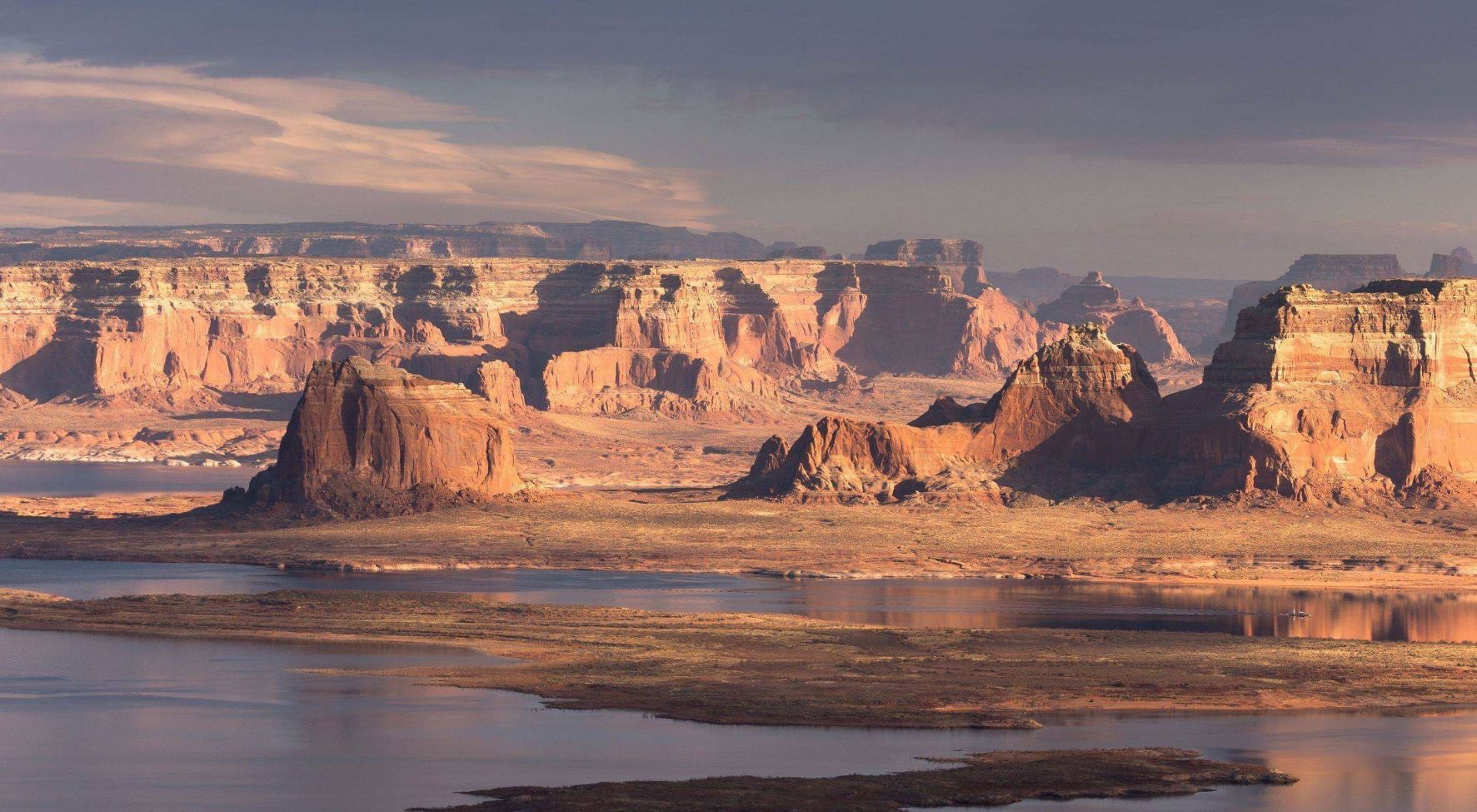Bureau of Reclamation announces reduced water release from Lake Powell
Statement from Taylor Hawes, Colorado River Program Director
Media Contacts
-
Lindsay Schlageter
Senior Media Relations and Communications Manager
The Nature Conservancy
Mobile: 612-968-3141
Email: Lindsay.Schlageter@tnc.org
For over 20 years the Colorado River Basin has faced unprecedented challenges caused by prolonged drought, higher temperatures, low runoff conditions and increasing demands. Because of this, the agencies responsible for managing the River have had to adapt and change its operations to address or mitigate potential risks.
Low snowpack and runoff are expected this Spring (2022), which combined with worsening drought conditions, has raised significant concerns about the short-term risks to water resource supplies and infrastructure in the Colorado River Basin.
Because of this, the Department of the Interior and Bureau of Reclamation are concerned that Lake Powell and/or Lake Mead could fall below critically low elevations within the next two years. As Lake Powell approaches elevation 3,490 feet or below, risks to reliable water supplies, environmental resources, and hydropower operations increase and certainty decreases
The agencies have decided, with input from the Basin states, to decrease releases from Lake Powell for 2022. Today the agencies announced that Lake Powell’s release this year will be reduced from 7.48-million-acre feet to 7.0-million-acre feet in an attempt to protect water supplies and power production in the region.
Taylor Hawes, Colorado River Program director for The Nature Conservancy, released the following statement in response to this decision:
“Today’s announcement to reduce the amount of water released from Lake Powell is a stark reminder of the dire conditions in the Colorado River Basin and the urgency to develop a plan to mitigate this ongoing crisis.
“We face unprecedented challenges in the Basin following decades of higher temperatures, low runoff conditions, and depleted reservoirs. We can’t control Mother Nature, but we can control our demands and how quickly we develop and implement solutions.
“While the decision to lower the release amount is an important step, it is only a temporary fix. We must address the underlying problem, which is that we are using more water than the River provides. The longer we wait to tackle this, the fewer options we will have, and the impact of less water in our rivers will continue to affect everyone and everything that depends on this River system.
“The Basin’s stakeholders have been developing solutions to adapt to a drier future for many years, but we must all accelerate the pace. We need short term solutions to stabilize the system while also working on solutions that ensure a sustainable and resilient river system for future generations.
“This is an “all hands-on deck” moment. We stand ready to work with water users and other stakeholders in the Basin to test ideas, share knowledge and implement projects on the ground to make the most difference in the shortest amount of time to secure water for our communities and nature now and in the future.”
The Nature Conservancy is a global conservation organization dedicated to conserving the lands and waters on which all life depends. Guided by science, we create innovative, on-the-ground solutions to our world’s toughest challenges so that nature and people can thrive together. We are tackling climate change, conserving lands, waters and oceans at an unprecedented scale, providing food and water sustainably and helping make cities more sustainable. Working in more than 70 countries and territories, we use a collaborative approach that engages local communities, governments, the private sector, and other partners. To learn more, visit nature.org or follow @nature_press on Twitter.
